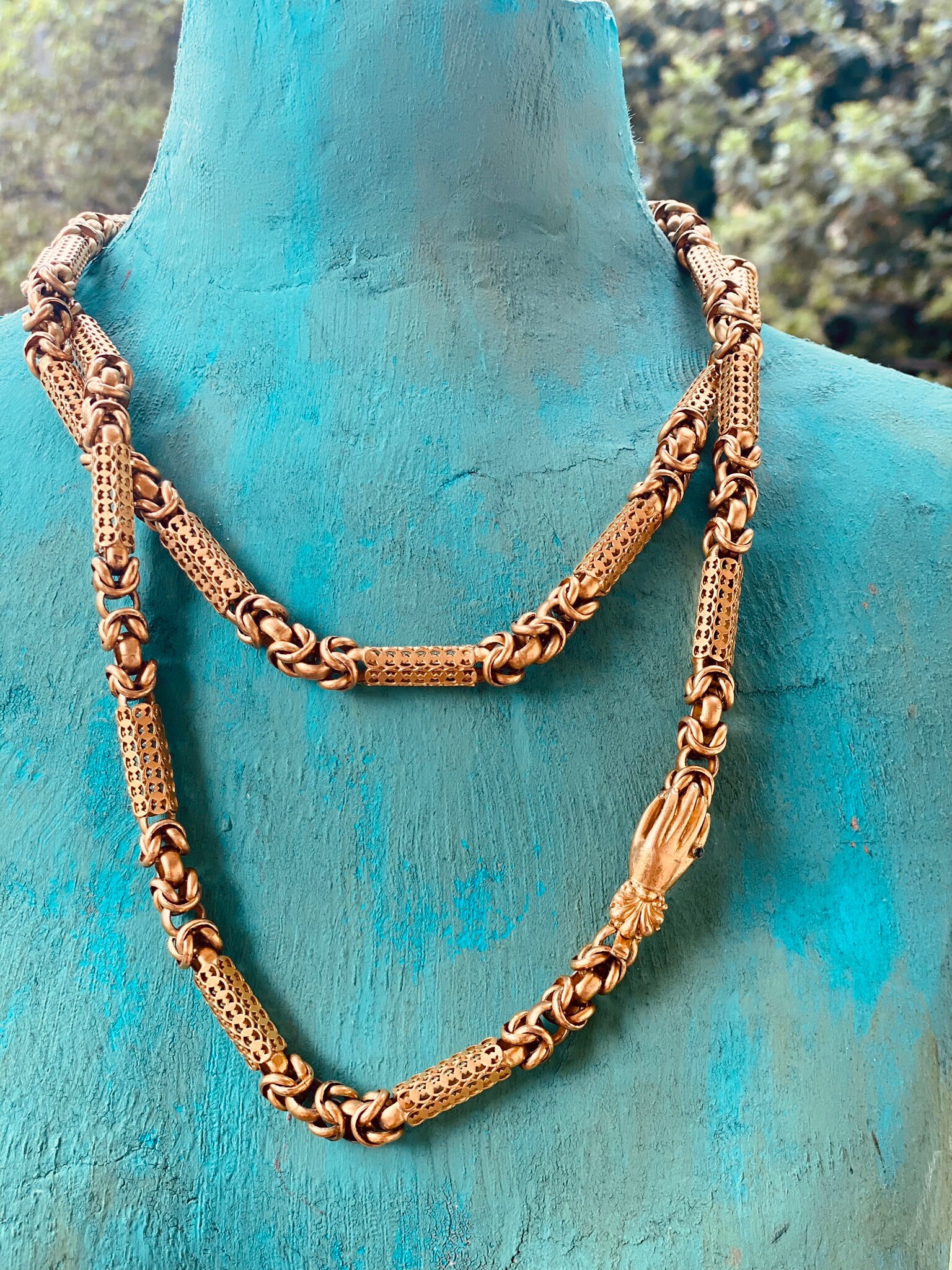
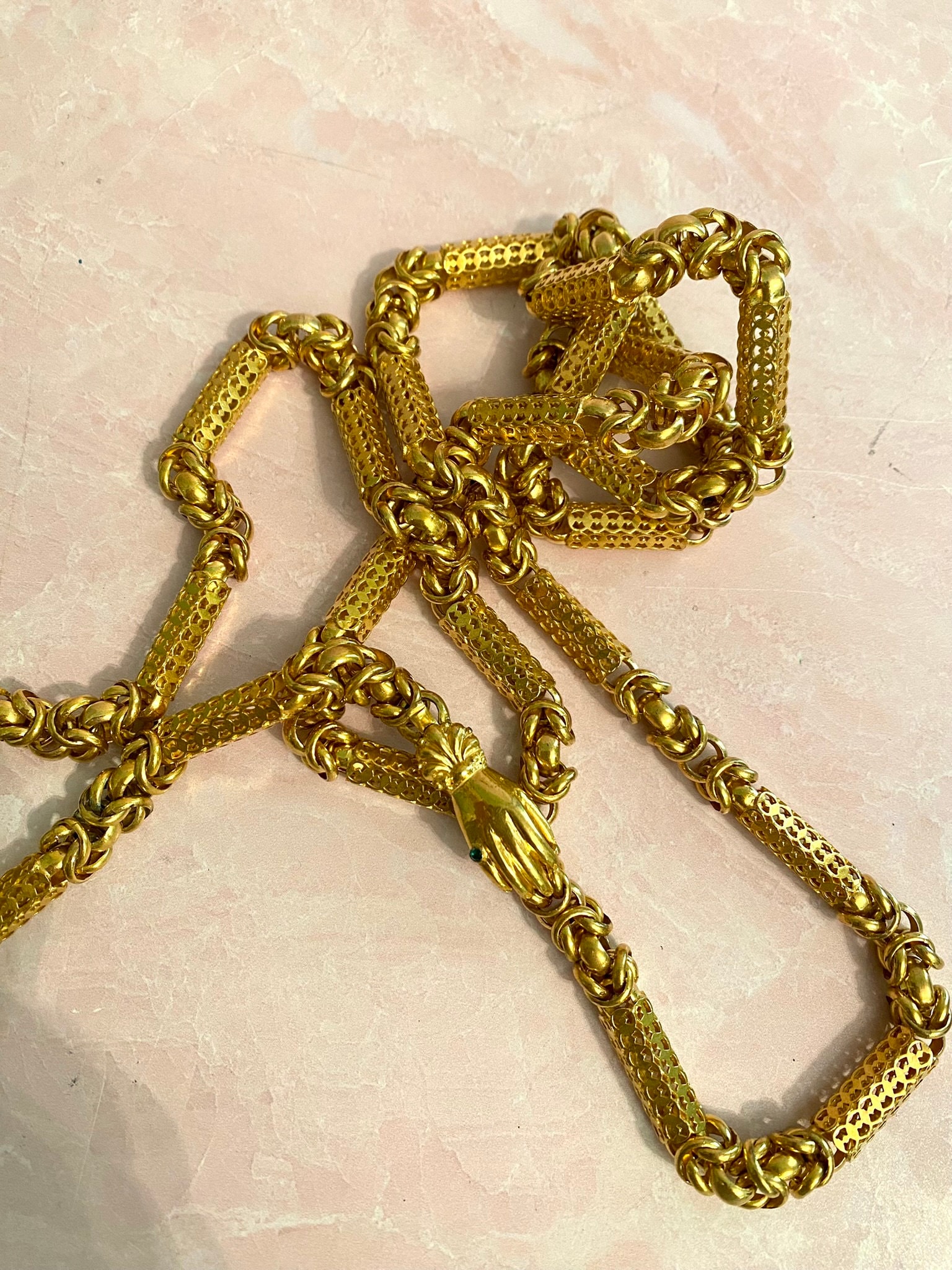
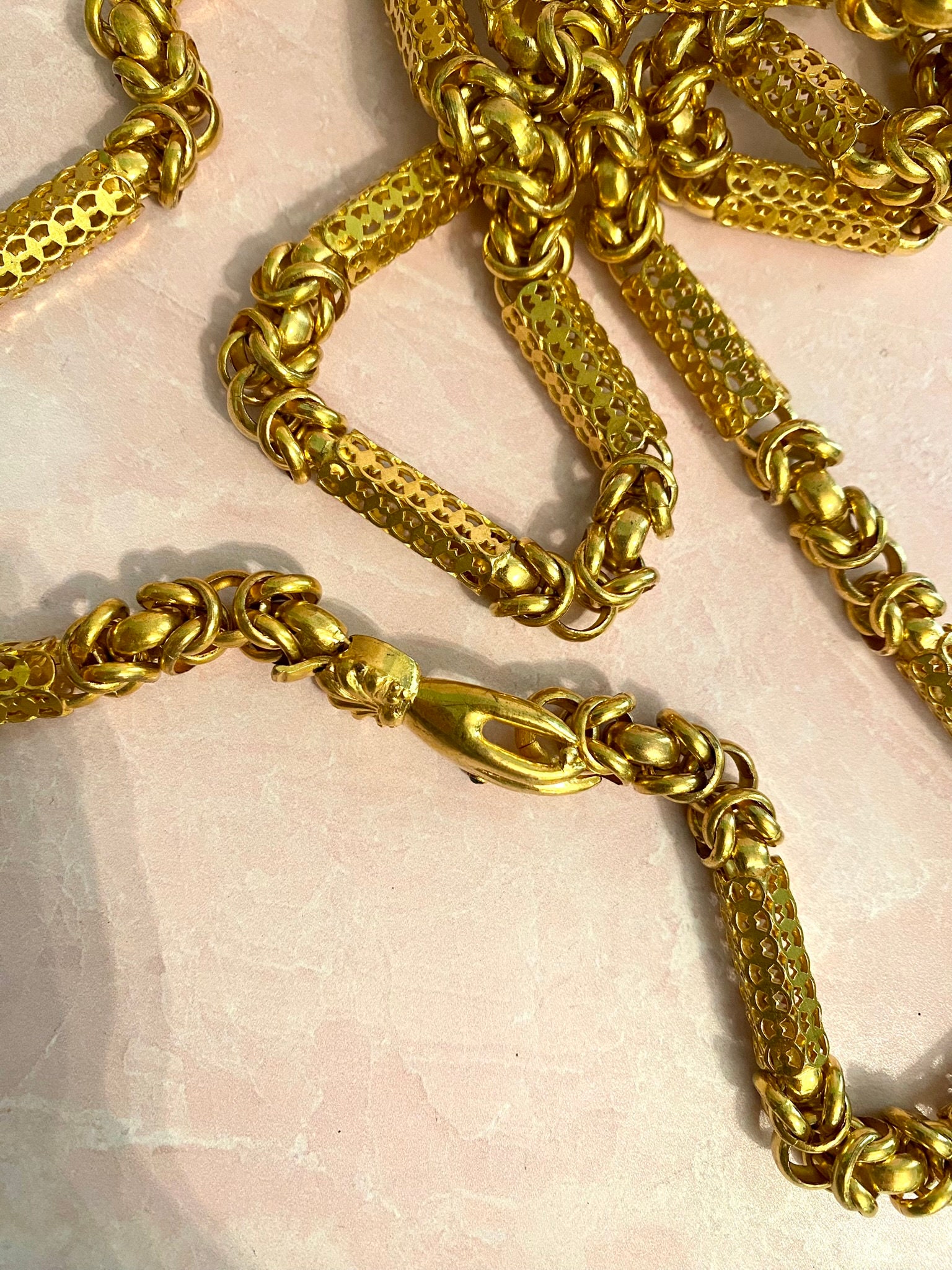

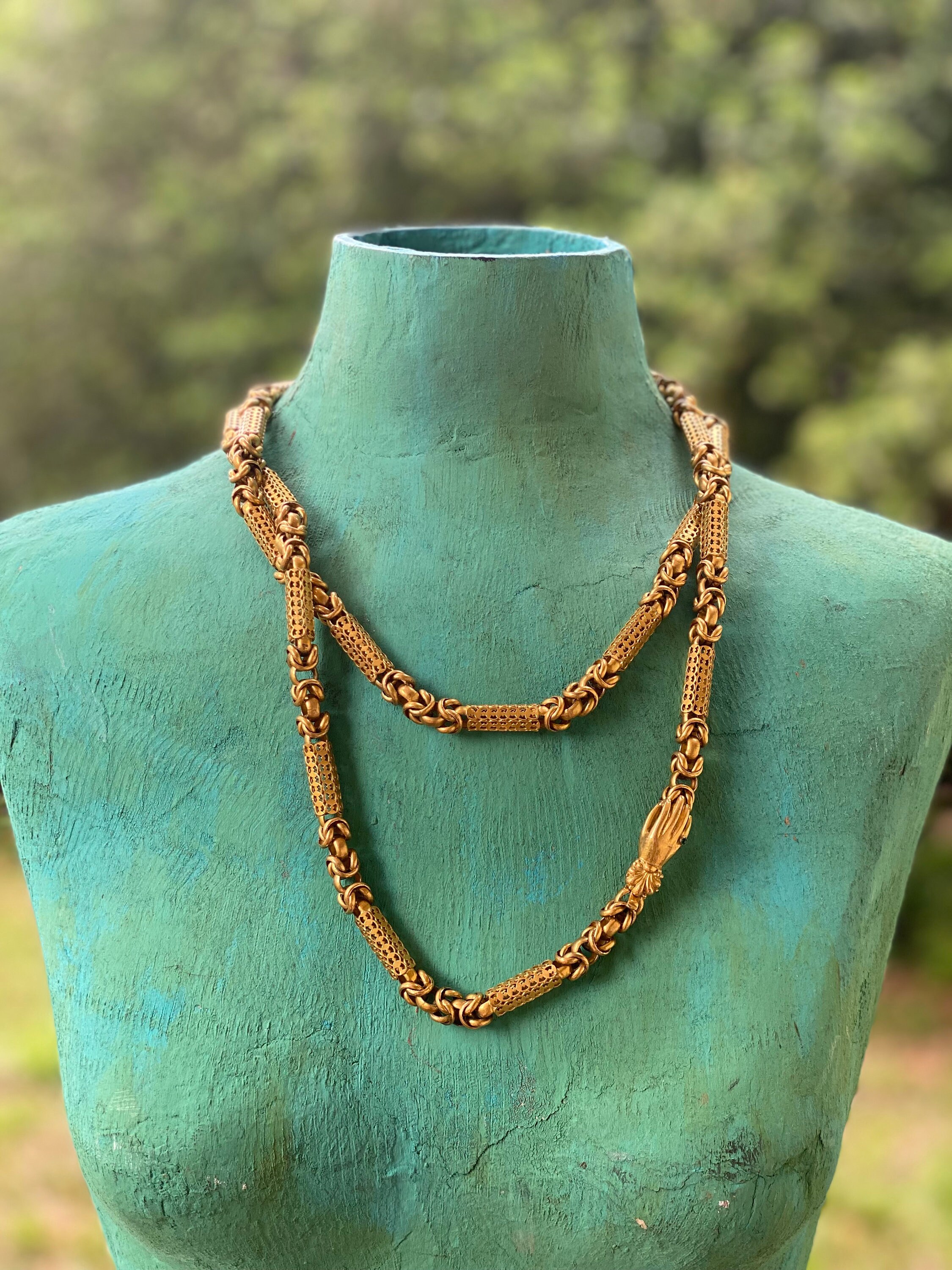
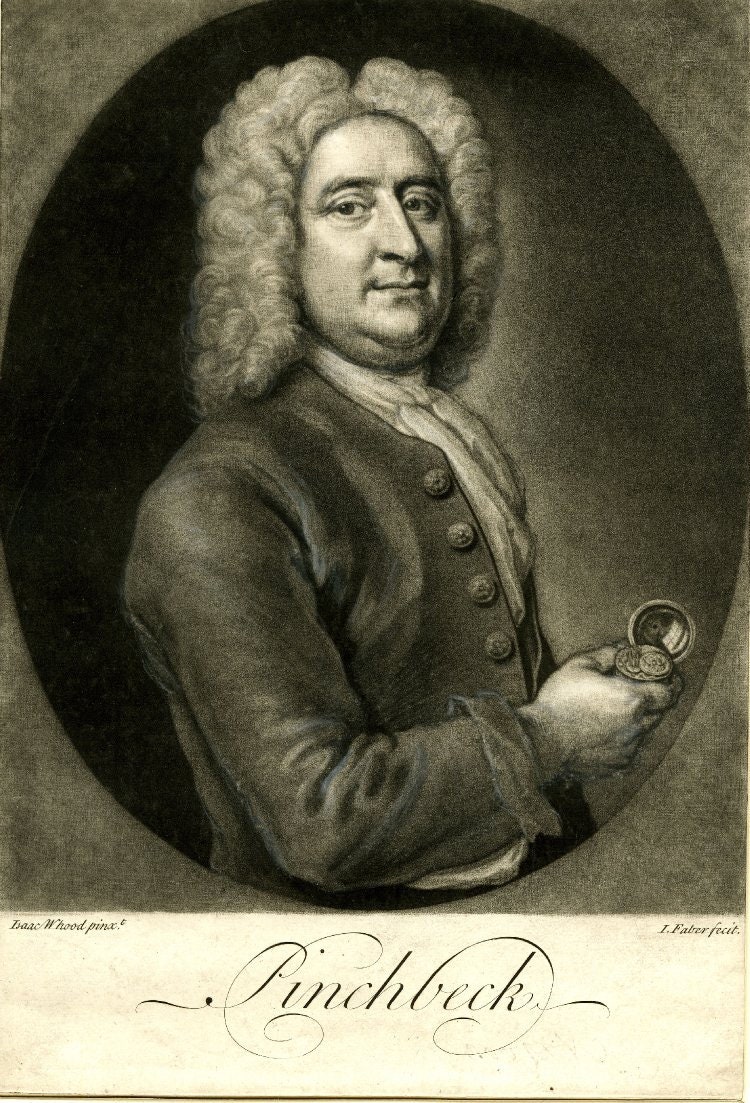
Georgian Pinchbeck Gold Muff Fancy Chain Link with Figural Hand Clasp Fabulous Rare Antique
$4,800.00
Fabulous circa 1800 Pinchbeck Muff chain.
This beautiful chain is 48 inches long
and weighs approx 4 oz.
This beautiful Pinchbeck Muff Chain or Necklace has a gorgeous, ornate Georgian fancy link chain with long hollow tube-shaped links pierced with a overlapping circle eternity pattern and interstitial lengths of complex cable chain, sometimes referred to as "Fancy Link" . The Necklace fastens with a Wonderful typical styled handclasp accented with a with a green bezel set stone on the pinky finger. The hand is accented a Fleur de lis style cuff. The original push clasp is good and tight.
This 200 year old necklace is in amazing Antique condition.
I have looked for wear and scraches, there is very little.
This came from a Midtown NYC estate.
More about Georgian Jewellery...
The Georgian Era was named for the English Kings George I, II, III and IV.
All of the Metal used by Georgian goldsmiths was Pinchbeck or Gold 18k or higher – lower Karat weights were not used until the Victorian era, when lower cost, stronger alloys became prevalent.
In the early 1700s a renowned clockmaker named Christopher Pinchbeck created an alloy of zinc and copper which bore a remarkable similarity to gold, and came to bear his name. See the Photo of Pinchbeck. The true gold color of pinchbeck was achieved by combining copper and zinc — much less zinc than formula of the same metals that is used to create brass. Mr. Pinchbeck was notoriously secretive of his exact formula. Pinchbeck did not tarnish and fade like other gold alternatives at the time which made it very desirable.
Pinchbeck was not intended to deceive people into mistaking it for gold, but to act as a substitute for those not able to afford 18k gold, as this was the only gold alloy available at the time. The lower value also meant that it was safer to wear pinchbeck jewellery when travelling, or in situations where theft was a possibility. Pinchbeck jewelry was indistinguishable from solid gold jewelry. Jewelers of the day treated both materials with the utmost care and skill, and combined it with fine gemstones to create the most fashionable styles available.
During the eighteenth century, Pinchbeck was widely used in jewelry instead of gold. These jeweleries looked like they were made of gold, but were much less expensive. They were a great favorite, especially with the Georgian and Victorian people, as they reduced the risk of theft. Rich people used them as “traveling jewelries”. This type jewelry was also widely used for theatrical purposes.
Sometime during the early nineteenth century, some dishonest jewelers started to pass off these jewelries as gold. As a result, this alloy came to represent a cheap gold imitation. which led to the material being viewed as inherently duplicitous. Pinchbeck became a term associated with chicanery and charlatanry, which did a great disservice to the deeply principled craftsmen who pioneered its use.It was however, still quite popular in the manufacture of costume jewelry. Other materials like 9K Gold, rolled Gold and other metal alloys replaced it during the mid-19th century and it faded from popularity
Today genuine Pinchbeck jewellery is highly valued and collectible in its own right, particularly pieces which come from the material’s early use in the Georgian period. Because every piece of Georgian jewelery was hand-crafted, a great deal of time was lavished on its construction.
About the Georgian Jewelry Period
It was a time of great social change in Britain, encapsulating many great advancements, including the abolition of slavery, the advent of rail travel and the recognition of the United States as an independent nation. It was also a time of great unrest for Britain’s neighbours as well. What with the French Revolution and new “Age of Enlightenment”, these turbulent times gave rise to a Deep and beautiful culture that is reflected in the distinguished jewelry styles of the era.
Georgian jewelery also predates mass production techniques that came with the increasing industrialization that began the Victorian era. One of the most influential was the rolling mill which allowed jewelers to create thin uniform thickness of metal sheets of gold with which they were able to bond gold over other metals, this was the "rolled gold" process.
I have had this tested. It is Pinchbeck, not gold or gilt.
All items are shipped USPS priority mail signature required, fully insured,
sorry only shipping to United States addresses, most of my overseas customers have mail forwarding service, if you need a recommendation for one I can help.
Please look at the photos and the video.
Please ask for more photos.
Please contact me if you have specific additional photo requests as photos are part of the description.
follow me on Instagram @Maimiesmini
All product photos are of the actual item.
Colors may differ slightly from actual product appearance due to differences in products and lighting conditions.
Read about Vintage Bakelite and ME in the Pioneer Woman Magazine, Spring Issue here:
https://photos.imageevent.com/kimlovesvintage/pioneerwomanbakelitearticle/ArticlePDF.pdf
.
Returns & Exchanges
I don't accept returns, exchanges, or cancellations
But please contact me if you have any problems with your order.
